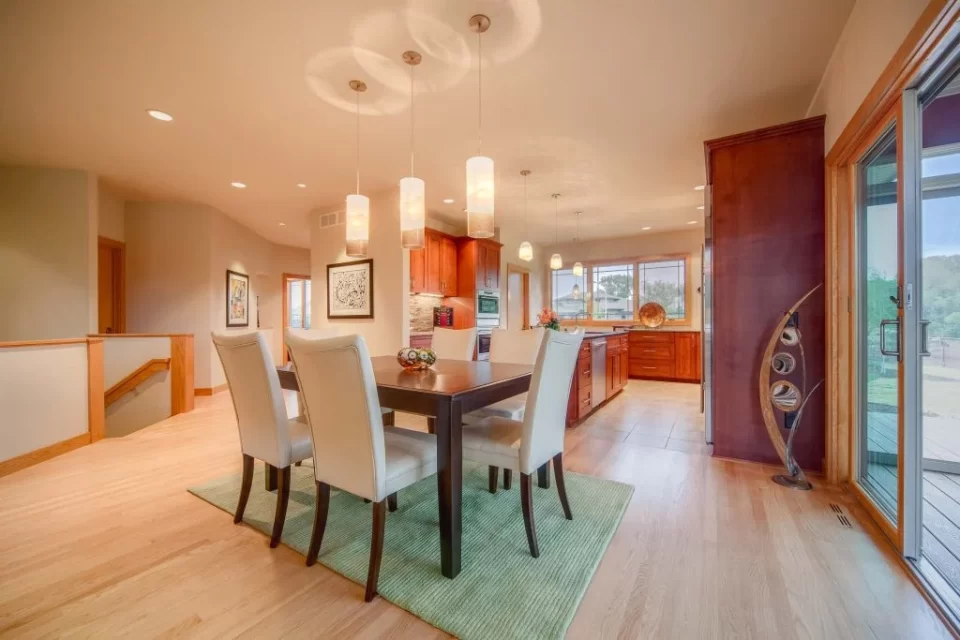Lighting is a fundamental aspect of interior design, playing a crucial role in creating a space that is both functional and aesthetically pleasing. Moving beyond a single overhead light, layered lighting is a design technique that utilizes multiple sources of light to achieve a balanced and inviting atmosphere. By incorporating ambient light, task lighting, and accent lighting, you can cater to different needs within a room, highlight specific features, and ultimately create a space that is truly livable.
Imagine a grand living room bathed in the warm glow of a high-end chandelier. This exquisite centerpiece sets the stage for layered lighting, establishing a foundation of elegance and inviting further exploration of the space through additional light sources. The rest of the article remains the same.
Understanding the Three Layers of Light
- Ambient Lighting: This layer provides the overall illumination for a room, establishing the basic level of brightness. Common sources of ambient light include ceiling lights, recessed lighting, and track lighting. The type and intensity of ambient light will vary depending on the size and function of the room. For instance, a kitchen might require brighter ambient light for meal preparation, while a bedroom might benefit from a softer, more relaxing glow.
- Task Lighting: This layer focuses on illuminating specific areas for designated activities. Task lighting ensures clear visibility for tasks like reading, working on a computer, or applying makeup. Examples of task lighting include table lamps, desk lamps, under-cabinet lighting, and sconces positioned near reading nooks or workspaces. When choosing task lighting, consider the specific needs of the activity and ensure the light is bright enough without creating glare.
- Accent Lighting: This layer is all about highlighting specific features or creating focal points within a room. Accent lighting can be used to showcase artwork, architectural details, or decorative objects. Recessed spotlights, track lighting with adjustable heads, and strategically placed wall sconces are all effective tools for accent lighting. This layer adds depth and dimension to a space, guiding the eye and drawing attention to desired elements.
Creating Harmony: Balancing the Layers
While each layer plays a distinct role, achieving balance is key to successful layered lighting. Here are some tips to ensure a harmonious blend:
- Light Levels: Consider the overall light level you want to achieve in the room. Start with the ambient light, then add layers of task and accent lighting to create brighter zones for specific activities while maintaining a comfortable overall ambiance. Dimmer switches are a valuable tool for adjusting the light levels to suit different moods and activities.
- Light Temperature: The color temperature of light plays a significant role in setting the mood. Warm white light (around 2,700 Kelvin) creates a cozy and inviting atmosphere, ideal for living rooms and bedrooms. Cool white light (around 4,000 Kelvin) offers better clarity and focus, making it suitable for kitchens and workspaces. Consider using a mix of warm and cool tones to create a nuanced and layered effect.
- Cohesiveness: Ensure the fixtures you choose for each layer complement each other stylistically. For instance, if your ambient lighting features a modern chandelier, contemporary table lamps and sconces would likely create a more cohesive look than traditional options. ATY Home Decor, a trusted provider of lighting solutions, offers a wide variety of fixtures across different styles, allowing you to find the perfect pieces to achieve a unified aesthetic.
The Power of Layered Lighting: Benefits Beyond Illumination
The benefits of layered lighting extend far beyond simply providing adequate light. Here are some additional advantages:
- Enhanced Functionality: By catering to different needs within a room, layered lighting makes the space more functional and versatile. You can have a brightly lit area for tasks while maintaining a relaxing ambiance in other parts of the room.
- Improved Mood and Ambiance: The ability to adjust the light levels allows you to create different moods and atmospheres. Dim the lights for a romantic dinner or brighten them up for a lively gathering.
- Visual Interest and Dimension: Layering light adds depth and dimension to a space, highlighting architectural features and drawing the eye to specific areas. This creates a more visually engaging and dynamic interior.
Conclusion
Mastering the art of layered lighting can transform your home from simply functional to truly inviting and visually stimulating. By understanding the different layers of light and implementing them strategically, you can create a space that caters to your needs, enhances your lifestyle, and reflects your personal style. So, ditch the single overhead light and embrace the power of layered lighting to elevate your home’s ambiance and functionality.

